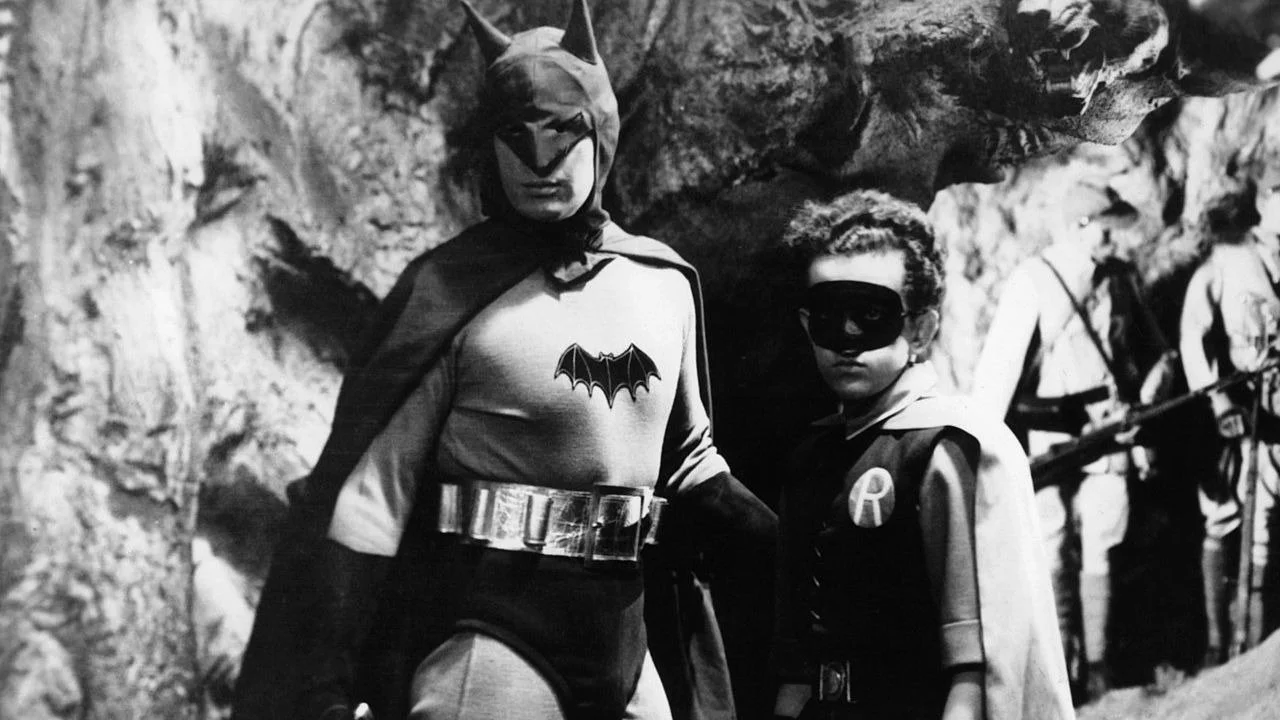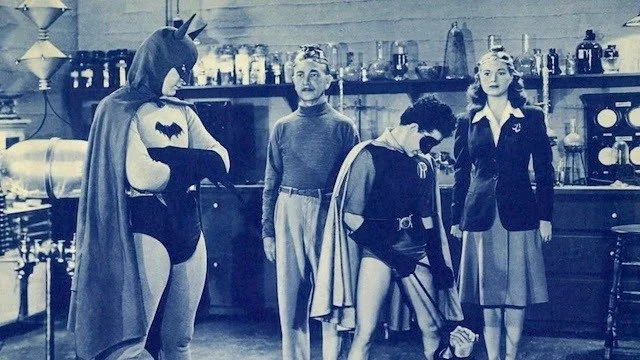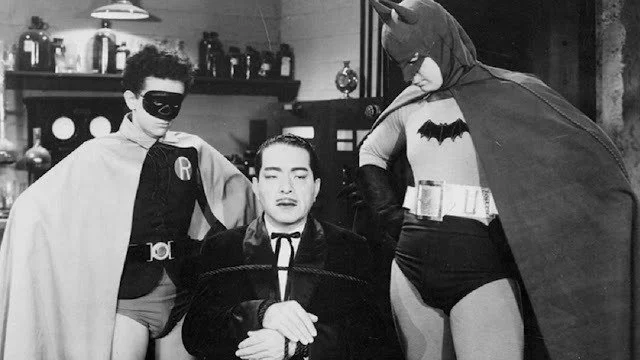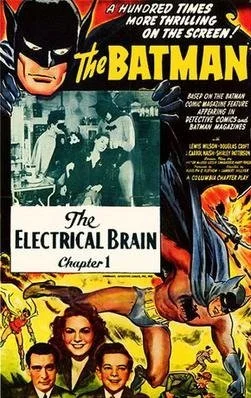The First Live-Action Batman DC Would Rather You Forget
When discussions about the original live-action Batman arise, the name that typically comes up in conversation is Adam West. Though he is among the most memorable, you would be forgiven for not realizing that he was the third to don the cape cowl. Some 20 years prior, in the middle of World War II, and only 4 years after his comic debut, Batman would make his first live-action appearance in The Batman (1943). Played by Lewis Wilson, this Batman starred in movie serials during WWII that would be used as propaganda for the American cause.
On December 7th, 1941, the Japanese Empire bombed the American Naval base, Pearl Harbor, causing the United States to join WWII. Just as in most wars, this started propaganda campaigns across many mediums to drum up support and boost morale amongst the people. One popular form of this would be through comic books. Comics were cheap to produce and cheap to purchase, causing them to be popular amongst poor communities, children, and soldiers.
RELATED:
Throughout the war, readers would see popular characters joining the fight. Batman and Superman would be seen fighting for the American way, and Wonder Woman would be introduced as a way to boost morale at home for the women who had to take up the jobs left behind by men fighting overseas. This opened up an opportunity for Batman to grace the big screen and act as a character that, as the narrator of the serials states, "Represents American youth and those proud to fight for it."
Before the television was a common household item, people attended theaters not only for movies but also to see news updates with footage and movie serials. Serials were a popular medium of the time that would evolve into what we know now as a television or streaming series. One of the most well-known examples is the original Flash Gordon series. As discussed earlier, the characters of Batman and Robin would receive not one but two of these serial series. While not much information exists about creating the 1943 serials, the story and its impacts on the character in comics are interesting for any comic book fan.
The general plot of the series is relatively basic as far as Batman stories go. A villain is developing a weapon that Batman and Robin must stop before it is completed by keeping the villain from the necessary resources. Upon viewing, modern audiences may be shocked at the characters, their motivations, and the language used, but unfortunately, it is a sign of the times.
The serials begin with an introduction of Bruce Wayne and Dick Grayson as the dynamic duo, Batman and Robin. After defeating and turning in some thugs to the police, our heroes discover a new villain has begun to plot against Gotham and the American people. Bruce and Dick then visit Linda Page, the love interest, who wants to introduce Bruce to her uncle, who is getting out of prison. Lewis Wilson does a fantastic job portraying Bruce's front as a lazy playboy and informs her it can't be any time before noon. Once alone, Dick questions Bruce why he doesn't tell Linda of his true self, which Bruce reminds him that she'd be endangered if she found out about their "special assignment from Uncle Sam."
Throughout the serial, the viewer is often shown to be agents of the United States Government and not vigilantes. After this encounter, things take a turn for the modern viewer. We are shown what was once Little Tokyo in Gotham. Run-down and almost completely abandoned, the narrator informs us this has been caused "since the wise government rounded up the shifty-eyed Japs...". If this is shocking to the ear, then the language used by American characters will only continue to make one uneasy. After panning over Little Tokyo, the viewer finds themself exploring the base of our villain, Daka. An agent of the Japanese Empire, Daka, is plotting to collect radium for a superweapon to fight the U.S. while turning Americans into "zombies" with devices that attach to the head and can be controlled with a microphone for commands.
Daka has his men kidnap Linda's uncle, who knows how to access a large amount of radium. He refuses to help Daka, so he is turned into one of the zombies. Daka shows off his radium gun to his cronies and then sends them to retrieve more radium to develop the weapon, and weapons like it, further. Batman and Robin foil the cronies' plot and retrieve the gun from the scene. The plot is essentially a game of keep-away from here on out. In proper serial fashion, these episodes always end with a cliffhanger but are sorted out at the start of the next episode. The fistfights are what you imagine from films of the era, though they can be pretty entertaining. In one particular fight, a man is knocked out, falls into a laundry cart, and finds himself being knocked around the room during the commotion. The reconnaissance missions are points that truly shine for longtime Batman comic fans. Numerous times the viewer is shown Bruce Wayne, Dick Grayson, and Alfred Pennyworth disguising themselves to interact with the villains and search for clues where the heroes would be easily noticed.
A personal favorite of mine, the villains, are lured to an office by an ad in the paper looking to return a strange gun to its rightful owners. Alfred, the bumbling comic relief that often daydreams of being a hero like his employers, is waiting for them in a fake beard with Batman and Robin waiting outside the window. Unfortunately, things go south in the negotiations. Alfred argues with them until they grab him, threaten him, and tug at his false beard. This causes half of the beard to come off. They are perplexed until Batman swings in and kicks them in the head.
Most of the critical plot is shown within the first couple of episodes and last couple of episodes. The rest is essentially filler until the inevitable downfall of the villain. Daka finds the radium necessary to build an even better version of his gun. His only issue is Batman. Thus, he spends the last couple of episodes trying to track Batman and kidnap him. Realizing that Batman always appears when Linda is in trouble, he kidnaps Linda, turns her into a zombie, and arranges for Batman to find her. Unfortunately, Batman falls right into the trap. After thugs rough up Batman and throw him in a box, Robin swings in and saves Batman. Lucky for the heroes, the people who are supposed to transport Batman aren't there yet.
Once they arrive to pick up the box, the dynamic duo follows the men to Daka's hideout. Batman, once again, rushes in headfirst, and Robin saves Batman from Daka, turning the World's Greatest Detective into a zombie. Robin is shown throughout the show as constantly rescuing Batman. Batman and Robin reverse the zombification of Linda and her uncle while also finding a black book proving Linda's uncle's innocence and the names of many Japanese spies in the U.S. The finale is bound to get a laugh from the viewer. As Daka attempts to run out of the hideout, Robin presses a button he assumes will close the entrance. Instead, a trap door opens, and Daka falls into a pit of alligators. The show ends shortly after this encounter as the police swarm in and Batman and Robin run out.
The series is ultimately a good watch for any longtime Batman fan. Many sides of the Batman character are explored to great effect. Lewis Wilson portrays the character much like Kevin Conroy, with three sides. The front of a lazy playboy, his true serious side, but his approach to Batman differs from Conroy's. While this Batman can be threatening to his enemies, he is also jovial and joking while crime-fighting. The character accuracy (aside from being jovial) doesn't end there. Batman is shown using his knowledge of science, detective, and fighting skills, and disguises himself while going under an alias, just like is often portrayed in some of Batman's greatest outings on the screen and on the page. The show's impact would be felt in the comics for years.
This would be the first appearance of the Batcave (referred to as the Bat's Cave in the serial) and its entrance via the clock; also, William Austin's Alfred would go on to be the main design for the character. Before this series, Alfred was drawn as a clean-shaven, heftier man. Another influence I noticed may connect to Batman v Superman: Dawn of Justice. In the serials, whenever the police find criminals left behind by Batman, the criminals have a bat symbol on their foreheads; In BvS, whenever the police find criminals left behind by Batman, the criminals have a bat symbol branded on them. So if the series contains these key elements of the character and heavily influenced the comics, why would DC want you to forget about it? The racism.
As discussed earlier, this series often divulges offensive rhetoric driven by the war against Japan. Even going as far as to praise the internment camps within the U.S. that imprisoned Japanese-Americans during WWII. While the main villain, Daka, is a member of the Japanese Empire, he is played by a white man in makeup that is supposed to make him look Japanese. If this isn't shocking enough to the modern viewer, multiple characters make racist remarks about him and the Japanese. One mobster has a change of heart about working for Daka. When he holds Daka at gunpoint, demanding to be allowed to leave, Daka agrees and says he will forget this encounter. The mobster replies, "That's the kind of answer that fits the [yellow] color of your skin ." Not only the bad guys make remarks like this. When Batman is captured in the finale, he exclaims to Daka, "Why you Jap devil!" These are just a few examples out of many within the serials.
Don't let these offensive themes and portrayals stop you from watching the serials. This series is a vital piece of Batman's history, but it is also a vital piece of American history. For a long time, propaganda has been a tool used by many collectives and governments to sway the public to a cause. This series is just another example of such and reflects the period. I am not condoning the words or actions present in the films. However, for any student of history, this is an insight into the mindset of the American government, the American people, and comic book companies at the time. The actors of Batman (Lewis Wilson), Robin (Douglas Croft), and Alfred (William Austin) all give fantastic performances of their characters. It's too bad it had to be in a project that used dehumanizing efforts to sell a war.
READ NEXT:
Source(s): Batman wiki




